Story and photos by Graham Earl
A few years ago people in the know were predicting the end of the supercar. A visit to this year’s Geneva Salon would quickly disabuse anybody of such pessimistic thoughts, because the overriding feeling I came away with is that the supercar is King. And it isn’t just the obvious traditional makers of these types of cars who are flaunting their wares to an eager marketplace, but an ever increasing clique of niche manufacturers jumping on the bandwagon and offering ultra expensive, ultra exclusive fodder for those with deep enough pockets. Looking at the many options available, there is clearly an awful lot of people with pockets deep enough to sustain such a growth in this market sector.
Manufacturers are increasingly aiming for the money-is-no-object customers, so what we get to see is an ever wider range of jaw dropping, highly impractical but utterly sensational motorcars.
Geneva is traditionally the most glamorous of motor shows, where the manufacturers choose to showcase their latest and greatest new models, which is ironic considering that Switzerland doesn’t even have its own car industry, but it is centrally located in the middle of Europe, so is comparatively easy to reach from anywhere. This year the crowds came in their thousands, too many for comfort, in fact. Roads leading to Geneva were jammed, the airport was swamped and the show halls themselves were choked. Some stands (notably Ferrari) were so busy from the moment the doors opened that it was all but impossible to move through the exhibition near their display area. My impression was that visitor numbers were up on recent years.
Italian Manufacturers_______________________
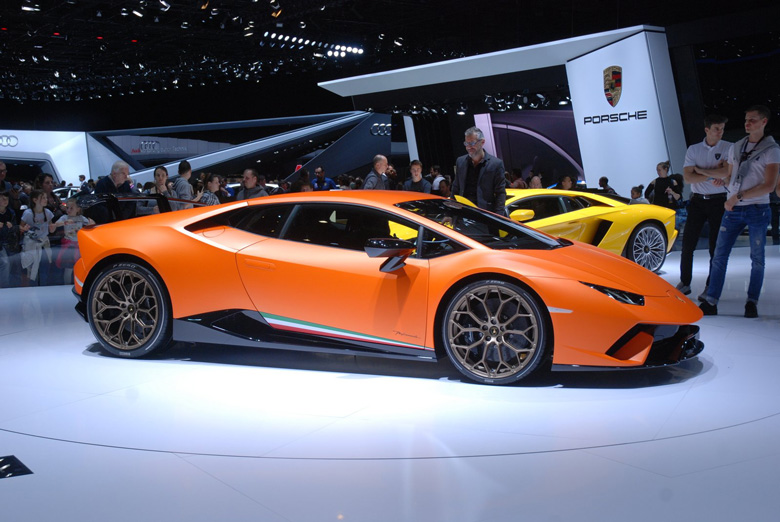
Italian supercar brands were to the fore, starting with Lamborghini, who were showing their Huracan Performante, the lightweight, stripped to the bone, high powered version of their entry model, which has just lapped the Nurburgring in a record time for a production road car, if you believe their own hype – which some don’t. It looked great, in a startling matte orange.
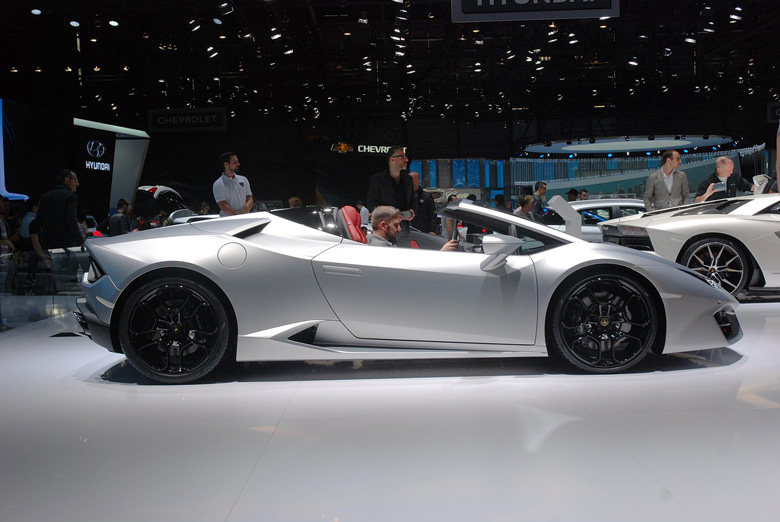
Also on display was a Huracan Spider and a pair of Aventador Ss. The standard Aventador is no longer available. The yellow car was shod with some cheap-looking wheels, which were from the options catalogue but appeared more like aftermarket accessories, and did nothing to enhance the aesthetics of what was already a good looking car. .
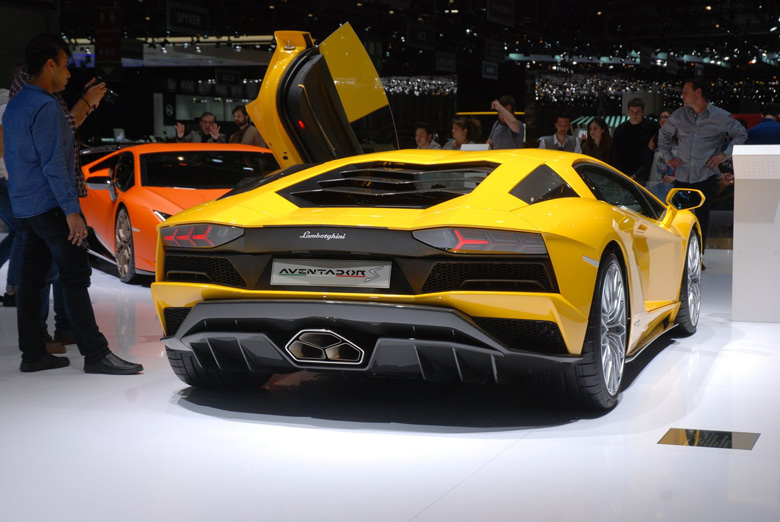
Parked adjacent to the orange Huracan was a bright yellow Aventador S. Against the stark white floor and stand furniture they presented very well, but I have to admit to being bored to death with cars painted in matte colours.
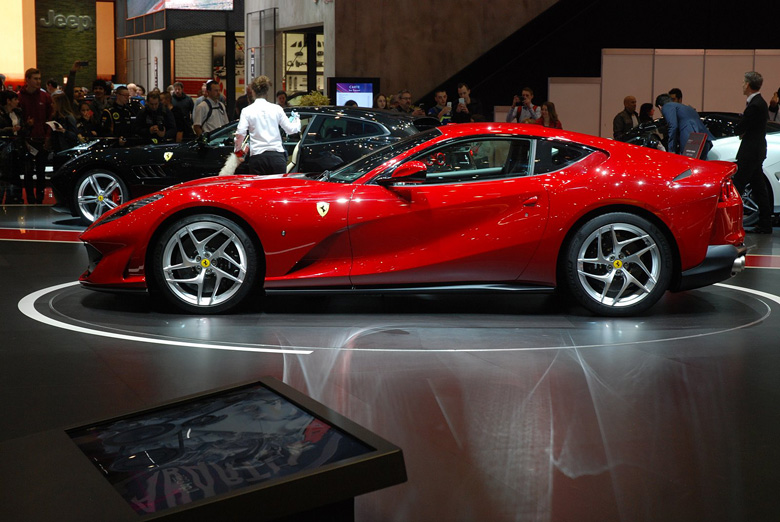
Ferrari used the occasion to reveal its latest mega car – the 812 Superfast. Technically amazing, obviously, and faster than anyone could possibly need, you tend to run out of superlatives when describing these types of cars, because they are all so damned mind-blowing. But you also have to ask yourself “what’s the point?” The 812 looks like a developed F12, proportionally and stylistically, and I suppose that’s what it is, penned by Ferrari’s in-house styling centre. So while there’s nothing wrong with it (in fact, there’s an awful lot right with it), it’s not especially jaw dropping. Having said that, I got speaking with someone who had just placed his order for one, custom built to his taste, of course, to match his custom-built F12 Tour de France back home. They had a red one on show, naturally, and one in matte grey. Oh dear!
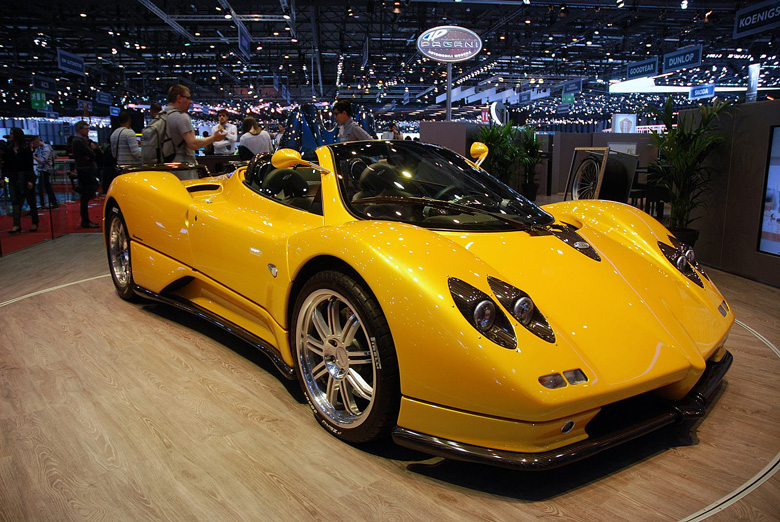
Pagani were showing a Zonda Roadster, which is still a fabulous creation, but it’s so old now it is virtually a classic. Bang up to date though is the brand new Huayra Roadster they were revealing here for the first time. Lighter than the coupe and with more power from its twin turbo V12, performance will again be more than adequate. All Paganis, but especially the new Huayra, are so exquisitely detailed and built that if anything automotive deserves to be called “art” then this is surely it. So much ink has been used to describe these lovely machines that there’s no need for me to go over the same ground.
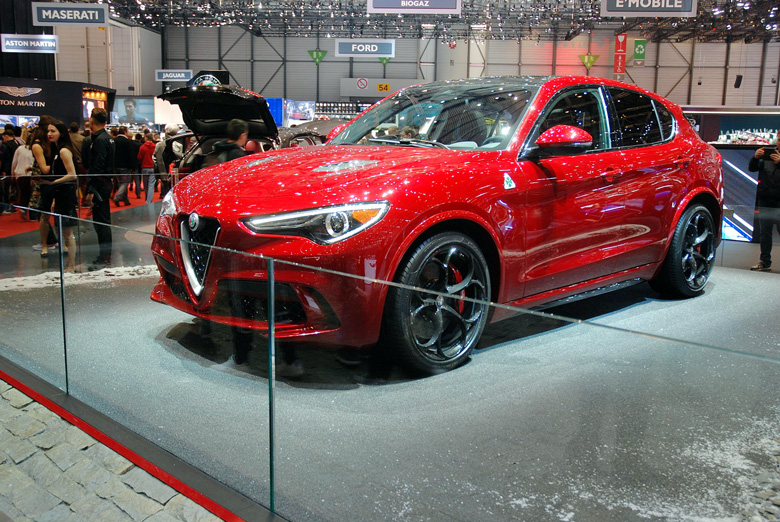
Alfa Romeo had their new Stelvio on hand. Clearly this is an important new model for them because the stand was full of them. Another once-great manufacturer with an illustrious sporting history condemned to making family cars that nobody could lust after.
Fiat showed their 124 Spider again, and this seems to be selling well, because I see them everywhere, even as rental cars in the Spanish islands. What I can’t understand is how the Italians came up with an inferior design to the Japanese, who created the MX5 on the same platform. The designers at Fiat spent too long trying to incorporate styling cues from the original 124, while those clever Japanese went for a clean sheet design and came up with a modern masterpiece. I never thought I’d say the Italians have been beaten at their own game by the Japanese, but in this case they surely have.
Abarth had their version of the 124, on a separate stand, to emphasise that this is a stand-alone brand within the empire, and I’m sure they’ll do well with it, but I can’t get excited by a modern imitation of an original classic. The first car was drawn by a genius design house (Pininfarina) and displayed all of their skill and artistry, and it offered the driver a unique experience. The new car is a mere copy, by Fiat’s in-house design department and it offers an experience much like any other new car.
Lancia was conspicuous by its absence, replaced in the Fiat group’s range of stands by Chrysler. Enough said on that matter.
Coachbuilders_______________________
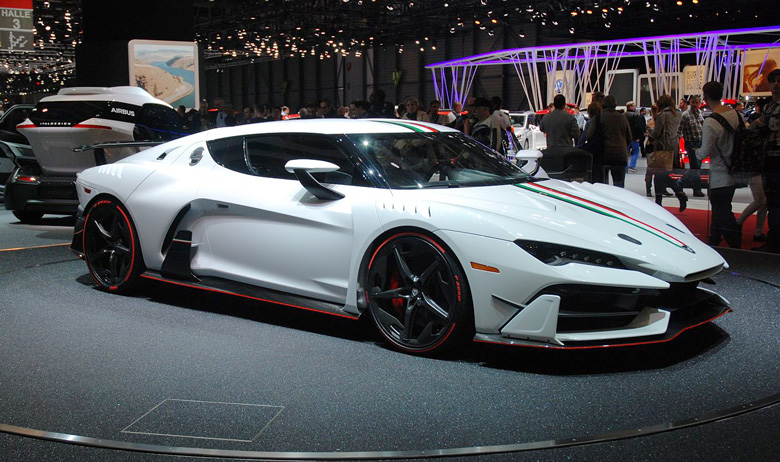
Of the traditional styling houses there were just three. Ital Design, now wholly owned by Volkswagen and no longer anything to do with Giugiaro, were showing a concept called Zerouno, using a Lamborghini V10 of 600+ horsepower, which they claim will manage 205 mph. Personally, I would rather have a standard Huracan, which I think looks better. The Zerouno looks much too fussy and contrived to be taken seriously. It would have looked spectacular in the 1970s, but by the very high standards of today it didn’t strike me as being anything special.
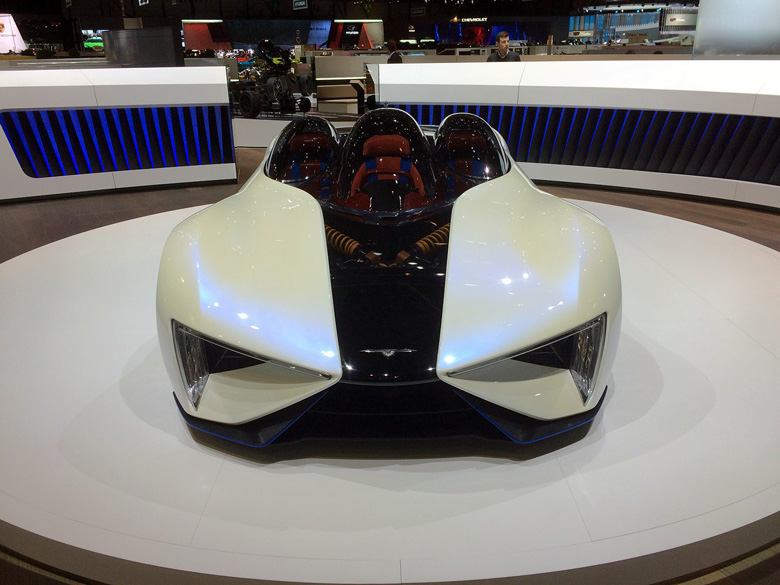
On the other hand, Giugiaro father and son team (Giorgetto and Fabrizio) have designed a street weapon for Chinese government-sponsored Techrules. A research vehicle has been shown in the past, but here we had a production-ready version, to be built in Italy, and the company is ready to take your order.
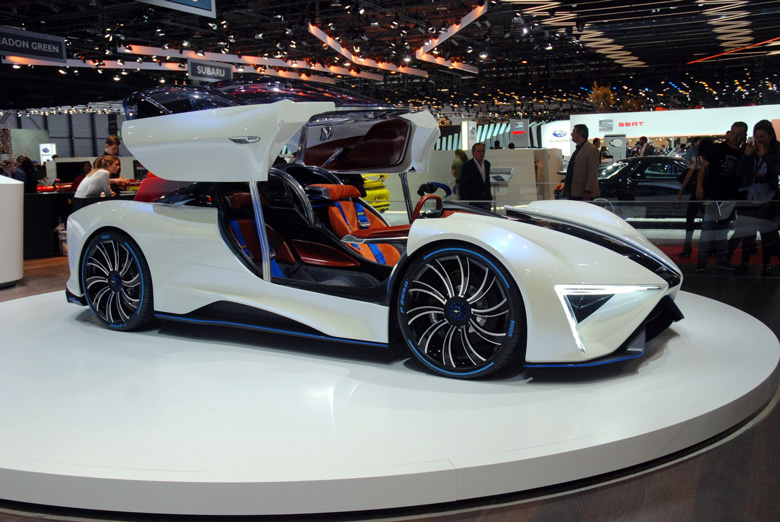
The design is typical of Giugiaro in all his confident pomp, and it is as outrageous a device as you would expect from such a master. The model on display has three seats, but you can order yours with one, two or three. A three-bubble glazed canopy covers the occupants (trouble-bubble, perhaps?) and opens as one to allow access and egress. You’d just have to hope it’s not raining when your passenger gets out, because you’d be left with a lapful of water.
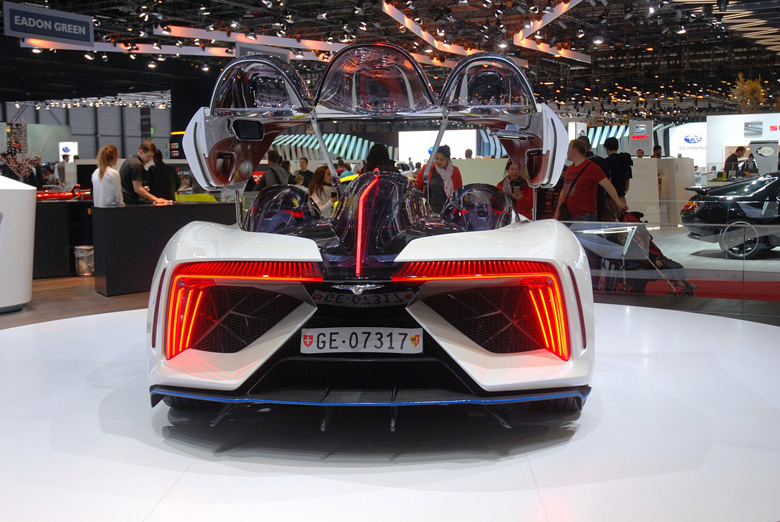
Fault picking aside, this was a brave challenge to the supercartel, claiming 0-62 mph in 2.5 seconds and a top speed of 217 mph. with power coming from electric motors, whose batteries are recharged by generators powered by diesel-fuelled turbines. Depending on your preference, you can order anything up to six electric motors and a combination of different turbines, with capability of burning different fuels. The ultimate version has the equivalent of 1,030 horsepower, and if you like the sound of that it could be yours for a trifling £2.2 million.
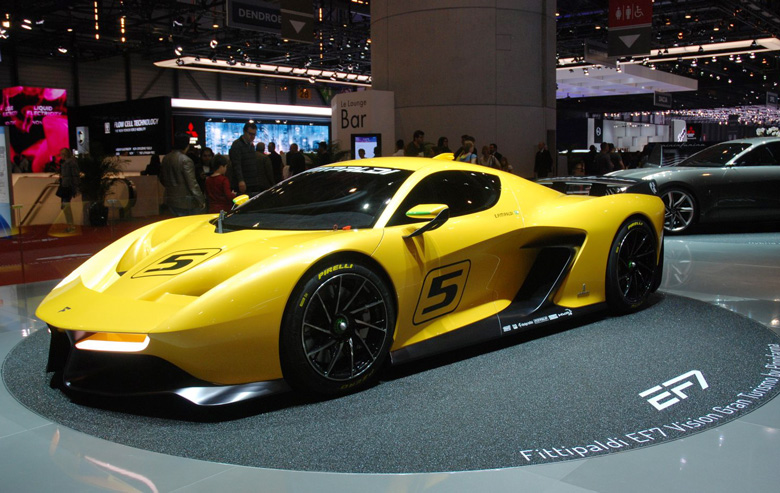
Pininfarina were on hand with a new car built for Emerson Fittipaldi, with the snappy title of EF7 Vision Gran Turismo. This track day car is to be built in 39 examples, one for each of Emmo’s significant race victories. With a simple naturally aspirated V8 engine of nearly 600 bhp, developed by the maestro behind AMG’s DTM racing programme it is intended to offer a cost-effective track racing experience with an exotic, but low maintenance lightweight supercar. Styling wise it looked not dissimilar to a cross between a Ferrari 458 and a La Ferrari – no bad thing, but rather obvious and a little lazy.

Also on Pininfarina’s stand was a new luxo-barge designed for Hybrid Kinetic Group, called H600. Unashamedly luxurious it certainly was, with arguably the nicest interior of anything at the show, but if you saw one on the street you really wouldn’t know it had been designed by one of the world’s foremost design houses, it was that bland. Like many cars at the show, this model was showcasing new technology in the form of range extending turbine generators to recharge batteries and provide juice for the electric motors. Also like many cars at the show they were quoting a 0-62 mph sprint in the 2 seconds bracket. This seems to be the new norm, whether achieved using electric motors or good ol’ fashioned petroleum guzzling internal combustion engines. It will be interesting to see some independent tests of some of these cars once they hit the road to ascertain whether anyone can actually achieve their speculative claims for acceleration, speed and range. Whilst the H600 was perfectly adequate for its intended market I would prefer to see Pininfarina showing us cars like the Modulo, P33, P5, Abarth 2000SP and 512S, not fat cars for fat cats.
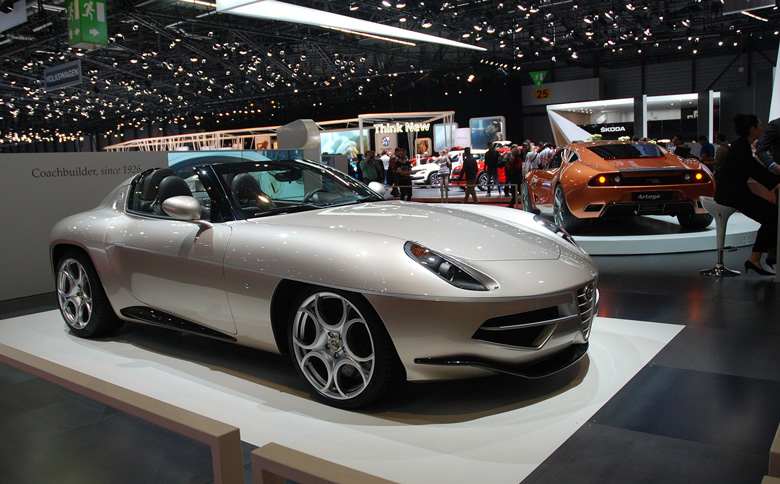
Last of the great Italian styling houses was Touring Superleggera, who brought along an exquisite Alfa Romeo Disco Volante Spyder. The car has been round the world winning awards at all the major concours events. Based on the Alfa Romeo 8C Spyder, only seven will be built, each hand made in the traditional Touring way, and the one on display was number two of those seven. Six have already been sold, so move quickly if you want to snap up the last one available. At last, here was something to get excited about, because this is a design which is discreet, refined and tasteful, It’s not something that shouts “look at how much money I’ve got,” even though you will need a lot to buy one, but it is a car which is actually useable and looks like you would be comfortable undertaking a long journey in it. For many, this was the car of the show.
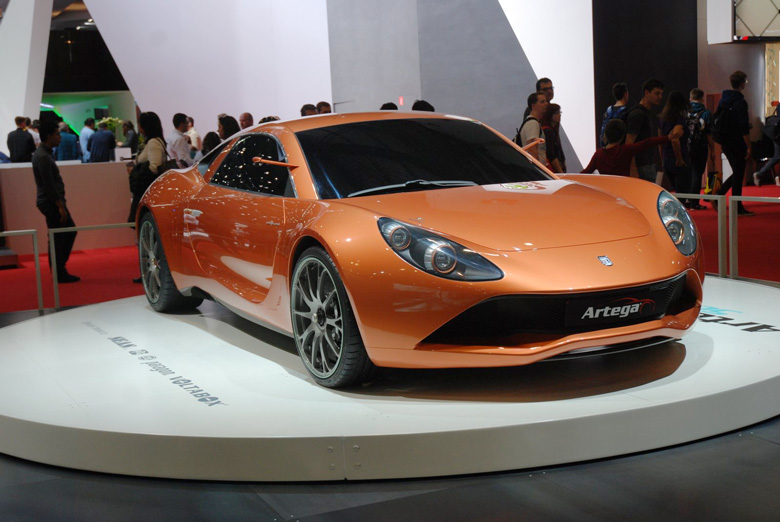
Also on Touring’s stand was a brand new concept they have designed for Artega, called the Scalo Superelletra. This three seater – with the driver in the middle – all electric car makes similar claims to other electric cars, with the 0-62 mph dash covered in around 2.7 seconds and an electrically governed top speed of 186 mph, but with a range between charges of over 300 miles. So here we have a practical electric car which overcomes most of the criticisms of this breed.

The Artega is very fast, it will be very involving to drive, based, as it is, on a development of Artega’s carbon fibre chassis from their previous GT, it can seat three adults in comfort and it can actually get places without running out of juice. Touring have exercised restraint with the design, and it looks like a proper car that can tackle the traffic-filled cities and pot-holed roads of the modern day. Copper was used for the colour of this car to emphasise the electrical aspect, and a happy co-incidence was the balance against the platinum of the Disco Volante. Very nice.
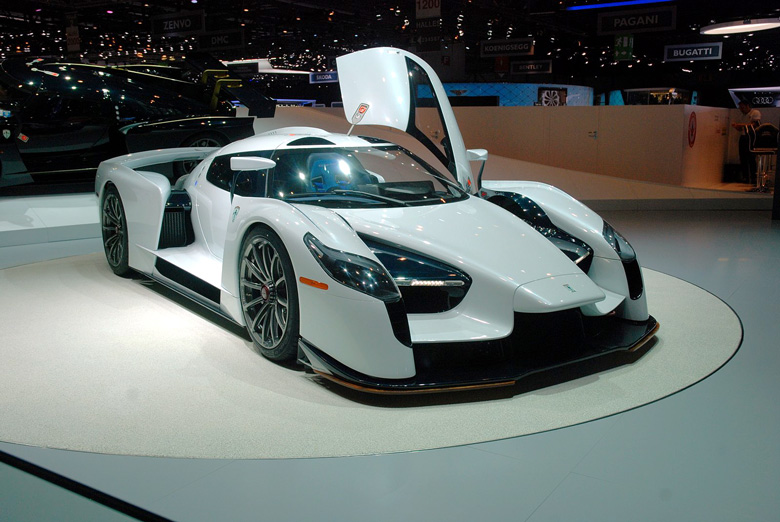
Jim Glickenhaus’ eponymous company was showing two of their SCG003s. I like this car for what it has achieved, and I admire Jim’s approach. He’s taken on the establishment and shown that with a small team you can achieve monumental things, so they deserve a huge pat on the back for the way they’ve gone about their business. The car, styled by Paolo Garella after he left Pininfarina, and manufactured by Manifattura Automobili Torino, obviously works well, judging by the team’s racing results, but it is more race car than road car. I know Jim uses his car extensively on the road, and he has actually laid down a challenge to race any genuine road car round the Nurburgring, a race which he firmly believes he will win, but the race track is surely where this car belongs. No matter how effective the car is, pretty it ain’t. Functionally beautiful is perhaps a better description for it, and it seems to suggest a path being taken by several small manufacturers, content to sell a handful of outrageous racy and impractical cars to a limited market.
French and British_______________________
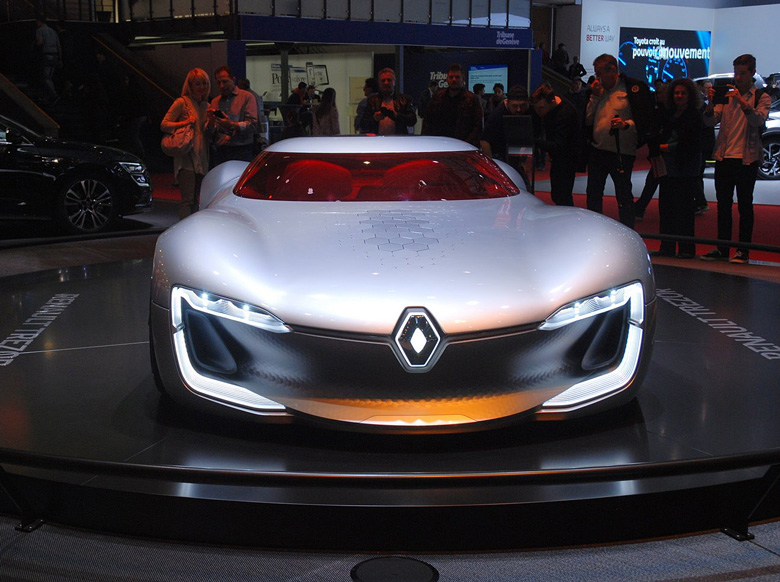
Arguably, the most interesting concepts were from French manufacturers, and even more surprising was that the barking mad folks at Citroen weren’t in the running. It was the ultra conservative Renault who stole the limelight with their visions of the future with the Trezor.

Renault’s Trezor was a wild-looking all electric, low slung mad-as-anything show stopper that looked like it had just escaped from a Batman film set.
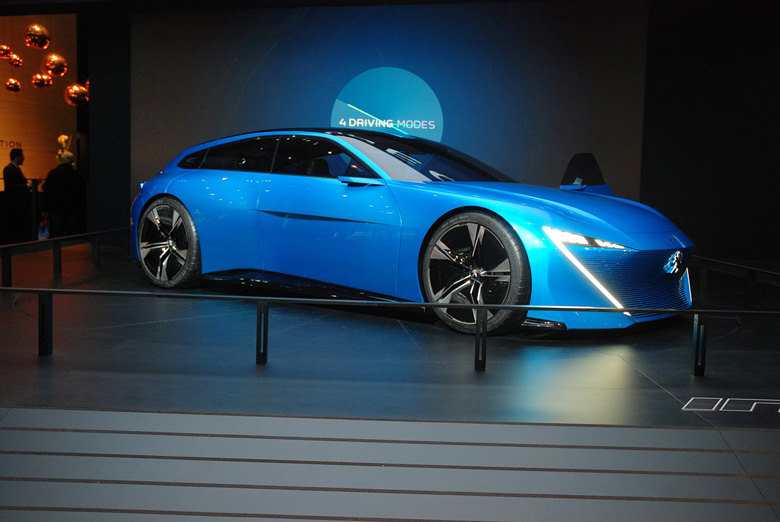
Peugeot’s Instinct looked altogether more realistic as something that you could imagine driving down the A40. It’s proportions were not dissimilar to Giugiaro’s original Brera prototype for Alfa Romeo. This four seat plug-in hybrid was showing ideas for refinements in occupant comfort and autonomous piloting, both themes being widely explored at the show, and both cars made extensive use of neon and LED lighting, which has become the must-have add-in for all new designs.
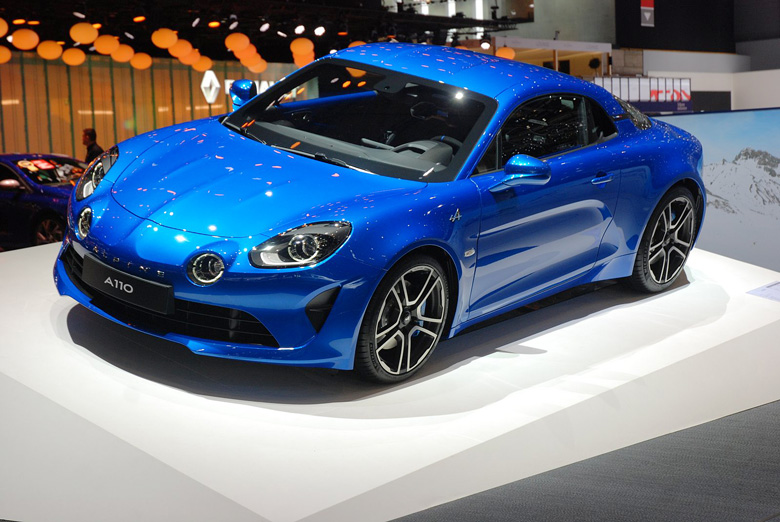
Alpine finally had their delightful new A110 on display. Prototypes have been around for a couple of years, but here were two production versions, one in traditional Alpine racing blue and one in white.
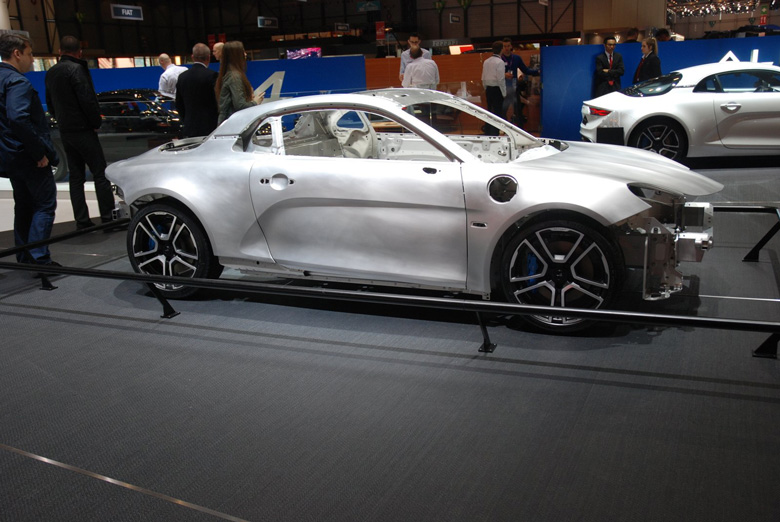
A bare aluminium chassis and body assembly was proudly displayed between the two complete Alpines. This is what sports cars should be about – small, light and useable. They will surely do well with this car, and I predict it will dent the already lamentable sales of Alfa’s 4C, and eat in to Porsche’s market share.
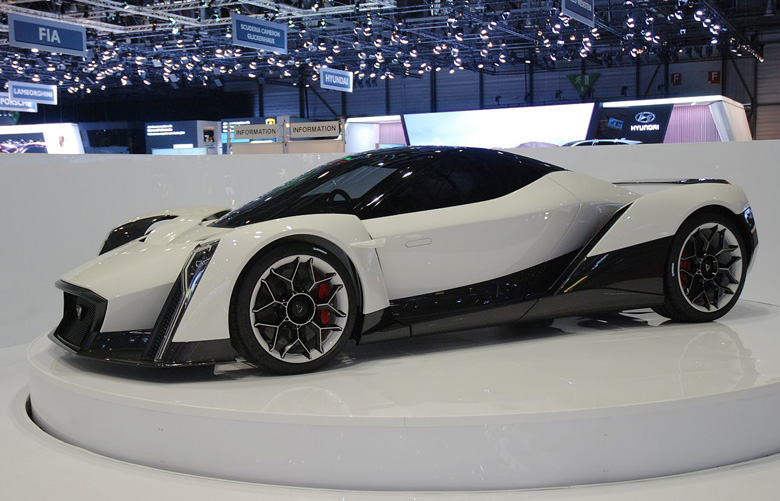
Then there was something called the Dendrobium, named after an orchid and, apparently taking its design cues from the natural world. Well, that’s what the designer told me. This fascinating concept is from a company in Singapore with no experience in designing cars. Their designer is a toy designer who approached car building with a completely fresh approach. It’s a two seat super sports car with electric motors that will accelerate very quickly and reach very high top speeds.
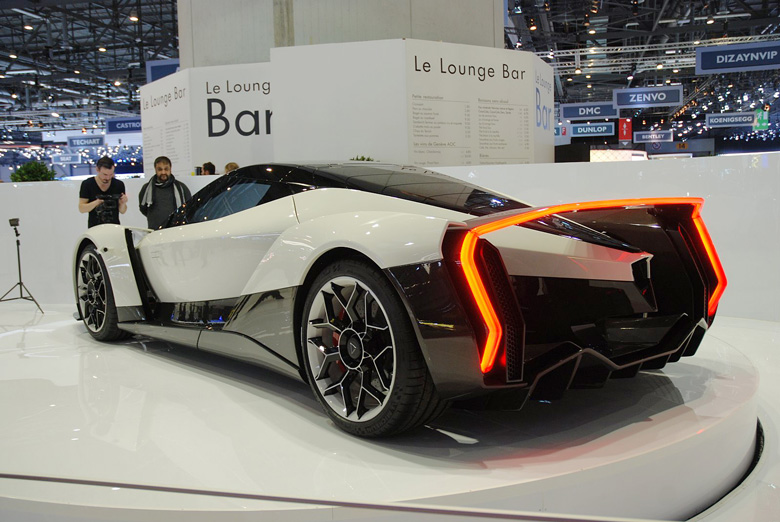
But the interesting thing about the Dendrobium and what gives it credibility over and above all the other here-today, gone-tomorrow concepts, is that it has been developed by Williams Grand Prix Engineering. The car itself is a striking piece of design, arguably better-looking than most of the established makers of this type of car, with many interesting features. Its starkly contrasting black and white colour scheme suited it well. Having spoken at length with the car’s designer, and company founder, I thought of Horacio Pagani, but of course, his background was with Lamborghini, rather more relevant than children’s toys. Watch this space.
Monteverdi_______________________
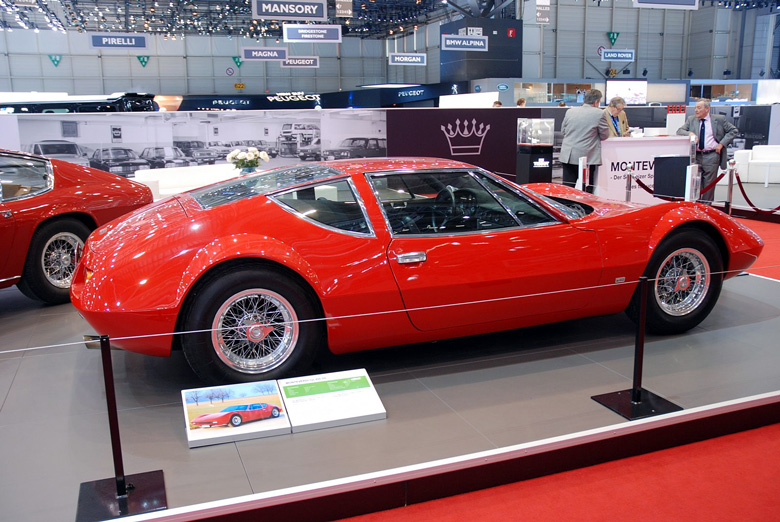
My favourite stand was a surprise. Here we were in Switzerland, so it was highly appropriate that a collection of classic Monteverdis from the Monteverdi Museum was on display; this the mad 450GTS Hai.
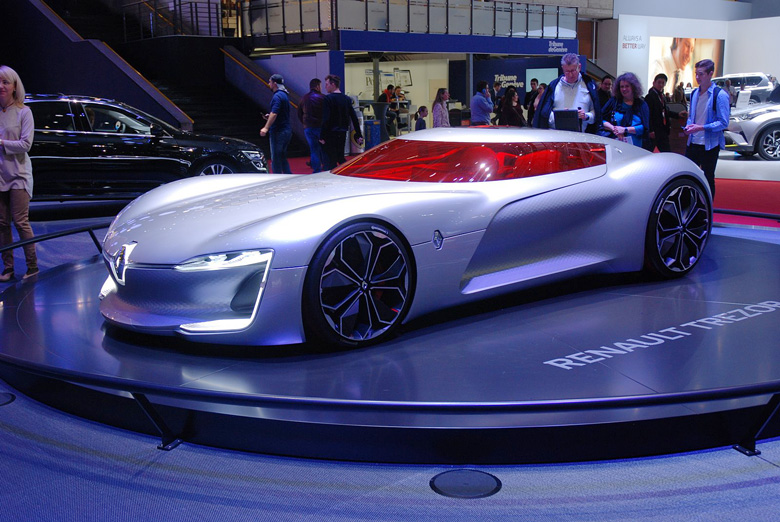
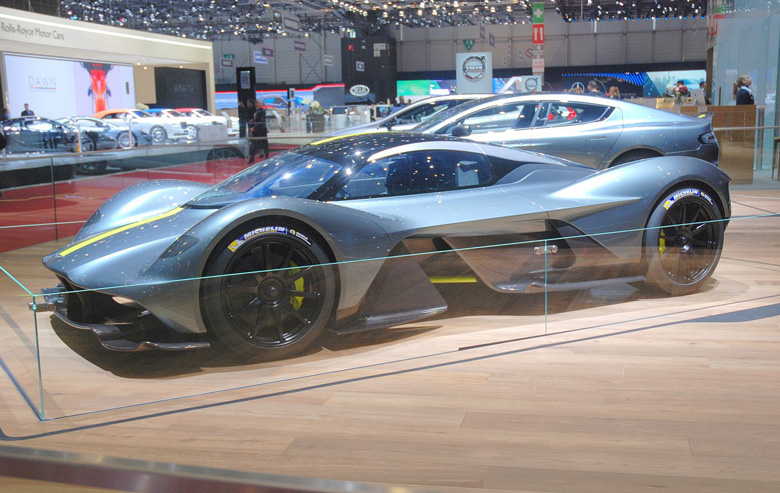

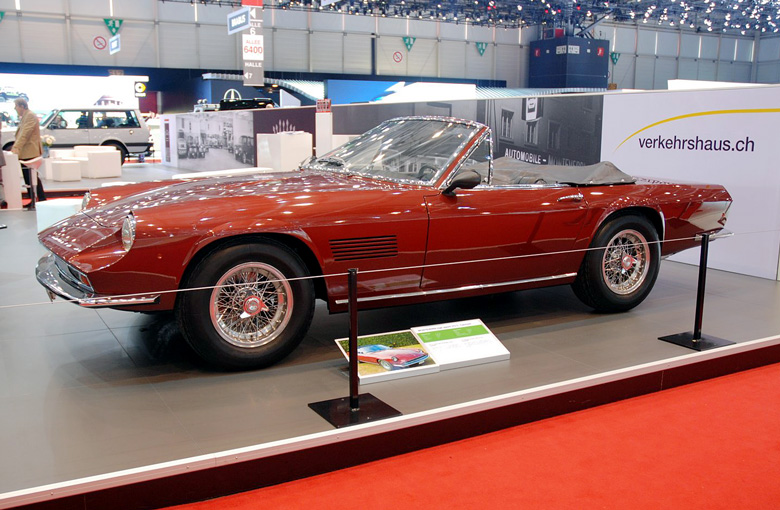
dendrobium? LOL.well the orchid is correlated to a female body part as is well known.So these folks in singapore who did the design may well have not been familiar with auto design but the body part could have been their muse.
why wasn’t the new giulia coupe gtv6 shown as rumored? methinks it just maybe the fire may have been taken from the 812 superfast…….? maybe? i hope that is the reason.
Great summary as and great reading as always.
these cars–as long as they’re built in some series–should be what races at le mans. wouldn’t it be fun to be a gazillionaire and get one of each and go to bonneville for a couple days, or maybe the texas mile.
Graham Earl says:
It would be good to see, Toly, but alas, I fear we won’t be seeing it any time soon. The FIA did attempt this sort of thing back in the 1990s (having killed off Group C) by encouraging a return to gt racing. As a result we had the likes of Porsche, Mercedes and Toyota creating very special cars, which were pure race cars, but which had to be built in minimum quantities for homologation. Hence the 911GT1, CLK GTR and GT One, respectively. We also saw Koenigsegg, Pagani and Bugatti entering the fray with cars which hadn’t been designed with racing in mind, and consequently, weren’t successful. Along the way we saw Ferrari F40s, Lister Storms and McLaren F1s, all of which tasted success (much more in Lister’s and McLaren’s case), before Lamborghini dipped their positively anti-racing toes in the water with the Diablo GTR Super Trofeo series and works-supported, Reiter Engineering-prepared Murcielago. Ferrari offered the same kind of works support to AF Corse and Prodrive to develop the 550 and 575 Maranellos, and today we have the Huracan from Lamborghini, following their spell on-track with the Gallardo. However, even this apparently more moderate form of racing is still crazily expensive, so the manufacturers are rightly cautious about committing to build cars for it. If Porsche come in, the other manufacturers will stay away, because they stand to lose more than they will gain. Only the very large companies can compete at this level, and as we all know, a La Ferrari, or Bugatti Chiron may be incredibly fast on the road, but they just don’t make good race cars without a huge amount of redesign and modification. And then, of course, they will all cheat and bend the rules – check out Jochen Dauer’s Le Mans-winning “gt” Porsche, which was nothing less than a 962 registered for the road.
But I think the crux of the issue may be less obvious. The moneyed types buying the current super, or hypercars want to keep them as currency, for future trading. Taking their precious new Ferrari / Bugatti / Koenigsegg / Pagani etc. to the track and wearing it out or risking damaging it is not in their mindset. I come across no end of exotic cars, as much as twenty years old with “delivery mileage”. They have become collectible ornaments rather than machines to enjoy properly, and in most cases the owners are not capable of driving them to anything even approaching the incredibly high abilities of the cars.